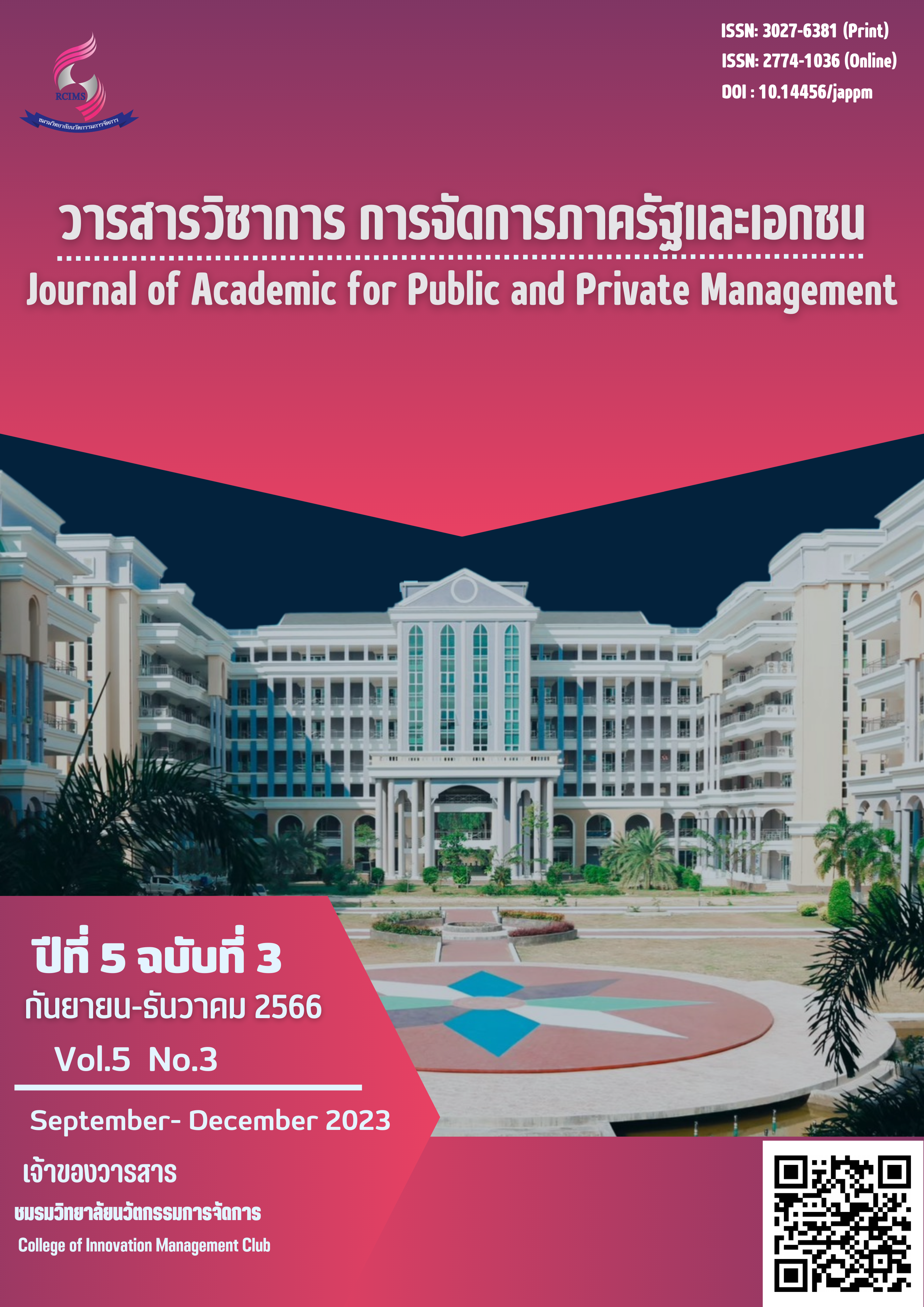The Structural Equation Modeling of factors Influencing University students' Social Welfare Behavior Intention in Taiyuan region, China
Main Article Content
บทคัดย่อ
Social welfare practice is an important way to realize the educational goal of "practice education" in Chinese colleges and universities. The formation mechanism of university students' social welfare practice behavior intention has guiding significance for colleges and universities to carry out social welfare practice.
This research adopted the theory of planned behavior as the basic framework, then added public welfare study variables and built a confirmatory factor model of the literature research results. The questionnaire survey collected 467 sets of questionnaires. Subsequently, a structural equation model was created and the assumptions were examined to analyze the influence of various factors such as, public welfare education, behavioral attitudes, subjective norms and perceived behavioral control on intentions in social welfare behavior of university students.
This research could be concluded that behavioral attitude, subjective norm, and perceived behavioral control had a significant direct impact on university students' social welfare behavioral intentions, on the other hand, public welfare education indirectly affected behavioral intentions through behavioral attitudes, subjective norms, and perceived behavioral control. We should strengthen the factors affecting university students' public welfare behavioral intentions in various aspects in order to stimulate students' motivation to participate in public welfare activities and promote active participation in public health activities among university students.
Article Details

อนุญาตภายใต้เงื่อนไข Creative Commons Attribution-NonCommercial-NoDerivatives 4.0 International License.
เอกสารอ้างอิง
Ajzen, I. (1991). The theory of planned behavior. Organizational behavior and human decision processes, 50(2), 179-211.
Chen, J. J., & Fen, H. (2021). Research on the relationship between volunteer background, motivation structure and volunteer behavior. Journal of Jianghan Academic, 1, 24-33.
Deng, Z. J. (2020). Research on charitable donation behavior and motivation of university students. Journal of Youth, 3, 3-8.
Gong, Y. P. (2018). The Structure, Measurement and Experimental Research of Youth Public Welfare Behavior. Wenzhou University, Wenzhou.
Hair, J. F., Ringle, C. M., & Sarstedt, M. (2013). Partial least squares structural equation modeling: rigorous applications, better results and higher acceptance. Journal of Long Range Planning, 46(1/2), 1-12.
Hu, Q. (2021). Research on Individual Network Charity Donation Behavio and Its Influencing Factors: Based on the Theory of Planned Behavion. Jiangxi University of Finance and Economics, Jiangxi.
Jhony Choon Yeong Ng., Zhao, S. Q., & Tan, Q. M. (2019). Research on the Sustainability of Volunteering Behavior of University Students. Journal of Contemporary Youth Studies, 6, 7.
Kim, Y., & Lee, W. N. (2014). Networking for philanthropy: increasing volunteer behavior via social networking sites. Cyberpsychology, Behavior, and Social Networking, 17(3), 160-165.
Liu, J. F. (2017). Analysis of the influence of entrepreneurship education on university students' entrepreneurial intention based on the theory of planned behavior. Journal of Higher Education Exploration,5, 117-122.
Marta, E., Manzi, C., Pozzi, M., & Vignoles, V. L. (2014). Identity and the theory of planned behavior: Predicting maintenance of volunteering after three years. The Journal of social psychology, 154(3), 198-207.
Schmitt, N., & Stults, D. M. (1986). Methodology review: Analysis of Multitrait-Multimethod Matrices. Applied Psychological Measurement, 10(1), 1-22.
Shen, G. P. (2014). Thoughts on Public Welfare Education. Journal of Basic Education, 2, 30-37.
Srinivasan, R., Lilien, G. L., & Rangaswamy, A. (2002). Technological opportunism and radical technology adoption: An application to e-business. Journal of marketing, 66(3), 47-60.
Sura, S., Ahn, J., & Lee, O. (2017). Factors influencing intention to donate via social network site (SNS): From Asian’s perspective. Telematics and Informatics, 34(1), 164-176.
Taherdoost, H. (2016). Validity and reliability of the research instrument; how to test the validation of a questionnaire/survey in a research. How to test the validation of a questionnaire/survey in a research (August 10, 2016).
Truong, Y., & McColl, R. (2011). Intrinsic Motivations, Self-Esteem, and Luxury Goods Consumption. Journal of Retailing and Consumer Services, 18(6), 555–561.
Wang, Y. (2014). The research on the volunteer service intention and behavior of university students in the view of the theory of planned behavior. Southwest Jiaotong University,Chongqin.
Wang, Y. S. (2016). Research on the Theory and Practice of Youth Public Welfare Education. Journal of Knowledge Economics, 18, 158-160.
Xiong, W. (2018). Research on Participation Willingness of Online Public Welfare Crowdfunding Based on Structural Equation Modeling. Xiamen University, Fujian.
Zhang, D. (2021). Research on Influencing Factors of Farmers' Willingness to Participate in Voluntary Service Behavior—Based on the Theory of Planned Behavior. Journal of Scientific and Technological Innovation and Productivity, 4, 17-22.
Zhang, M.N., Wang. J.T. & Chen. R.Y. (2021)Research on Influencing Factors of Youth Volunteer Service Behavior from the Perspective of Social Support. Journal of Guangdong Youth Research, 35(02),104-112.
Zhang, Z. H. (2013). Construction of my country's Public Welfare Education Linkage Mechanism. Journal of Contemporary Education and Culture, 6, 8.
Zhang, Z. H. (2013). Investigation and Research on the Status Quo of Public Welfare Education in my country. Journal of China's Out-of-School Education, 36, 3-4.


